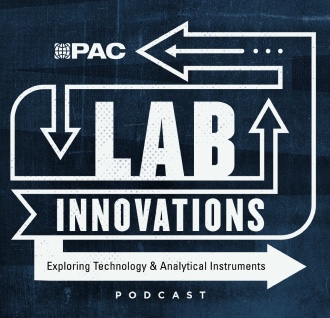Question
-
What are the most attractive long-term options for incorporating autothermal reforming (ATR) and/or partial oxidation (POX) to produce blue hydrogen at near-zero CO2 emissions? Or can CO2 emissions?
Mar-2023
Answers
-
Patrick Cadenhouse-Beaty, Cadchem Technology Ltd, pjcbeaty@gmail.com
Andrew Layton of KBC has very kindly advised in his reply as follows: Finally, ATR and POX do not use separate furnace firing as SMRs do. Therefore, pre-combustion capture allows a larger percentage of CO2 to be captured. As a result, ATR/POX units may be preferred over greenfield SMRs for producing blue hydrogen on a large scale.
This is quite true. However, UK process development company Cadchem Technology Ltd has gone one step further, and is currently developing a novel, patented technology for the advantaged production of Blue H2 from natural gas. CTL's FARST process enjoys a 95-98% HHV thermal efficiency, is scalable from 2 to 750 tonnes/day hydrogen production, and - with internal 95+% CO2 capture - returns LCOH values some 2/3 of BEIS' 2019 SMR+CCS counterfactual. It uses 2/3 the gas than SMR, needs no ASU and accordingly enjoys significant capital and operating expenditure advantages over all other routes to hydrogen. A logical application of FARST, apart from lowest cost lowest emission bulk hydrogen production, is to precombustion decarbonisation of 24/7/365 power generation in local, regional or national H2-fired CCGT's to replace current CO2-emitting gas, oil or coal-fired generation equipment.
Currently at TRL7, with technical due diligence, preliminary process heat and material balances, piping and equipment sizing all completed sufficient for AACE Class 4 TIC capital and operating cost definition, CTL seeks sponsorship and/or investment enquiries from interested parties for a 2-10 tonne/day small commercial scale prototype, complete with H2 and CO2 and N2 byproduct storage and bulk shipping facilities and H2 road/rail/aviation/marine vehicle refuelling.
Jun-2023
-
Scott Miller, Honeywell UOP/Ortloff Engineers, scott.a.miller@honeywell.com
Current SMR units can reduce CO2 emissions from on-site hydrogen production by approximately 60% through the addition of pre-combustion carbon capture to an existing SMR unit and by over 90% by adding post-combustion carbon capture to an existing unit, which significantly reduces the process Scope 1 emissions.
When designing a new unit and leveraging ATR or POX technology with carbon capture to produce hydrogen, over 98% of the CO2 emissions from the process can be captured. These technologies are, therefore, very attractive when minimising Scope 1 emissions is critical, which will be driven by policies focused on reducing the carbon intensity of hydrogen production. ATR and POX also typically benefit from economies of scale, making them the most economical way to produce lower-carbon hydrogen in large quantities as demand for hydrogen grows.
Mar-2023
-
Andrew Layton, KBC (A Yokogawa Company), andew.layton@kbc.global
CO2 emissions from SMRs can be reduced by maximising design efficiency. Compared to units from the 1980s, modern units are typically at least 10% more efficient because they use a PSA to purify hydrogen instead of CO2 scrubbing. In addition, enhancing the design and, to a lesser extent, the catalysts has also improved SMR efficiency. While the efficiency of an existing SMR can be improved to a limited extent, older and less efficient units are replaced rather than upgraded. Reconfiguring or upgrading the SMR furnace is very expensive because the steam generation, process, and flue gas heat recovery system are integrated. Furthermore, it is often necessary to generate more hydrogen and, therefore, build a larger unit.
New SMR units tend to be designed to export less steam or even no steam at all. This leads to substantial reductions of CO2 emissions in the SMR, at least part of which is likely to be offset by steam generation elsewhere unless green electricity can generate steam.
With pre-combustion carbon capture, at least 30% of the CO2 generated will still be released. An SMR equipped with pre-combustion capture will still emit the CO2 from the fuel fired. Furthermore, the carbon in the feed that is not converted to CO2 in the reaction section but downstream in the PSA will not be captured. It will still leave the unit as CO2 from the furnace stack. Thus, higher capture rates require post-combustion capture, which is more expensive in terms of capital expenditures and operating costs.
Finally, ATR and POX do not use separate furnace firing as SMRs do. Therefore, pre-combustion capture allows a larger percentage of CO2 to be captured. As a result, ATR/POX units may be preferred over greenfield SMRs for producing blue hydrogen on a large scale.
Mar-2023
-
Nitesh Bansal, Topsoe, niba@topsoe.com
There are multiple advantages of using ATR technology for blue hydrogen production:
• High carbon capture is possible using ATR. Topsoe SynCOR (advanced ATR) can achieve up to 99% carbon capture using only process gas carbon capture
• ATR technology can provide the scale of operation, which is the key feature for blue hydrogen production. Topsoe SynCOR (advanced ATR) can reach up to 800,000 Nm3/h hydrogen capacity in a single train
• Overall levelised cost of hydrogen production (LCOH) is lower in ATR compared to SMR due to the scale-up Capex as well as lower Opex and higher carbon capture credits.This begs the question: can CO2 emissions from SMR units be further reduced?
CO2 emissions from SMR units can be reduced by 60-65% by installing process gas carbon capture. If there is a requirement to further reduce carbon capture by >90%, there are multiple options:
• H2 firing in the reformer. This will increase the overall plant size by 30%
• Installing flue gas carbon capture. This is expensive from both a Capex and Opex point of view.Mar-2023
-
Morgan Rodwell, Fluor, morgan.rodwell@fluor.com
For new, large scale blue hydrogen production, oxygen-blown ATRs are the most economically attractive if very high CO2 capture rates are desired. Process gas capture rates above 95% are achievable, although the economics get worse the closer you try to get to 100% (which isn't possible). Some ATRs have preheat furnaces that will need to be fired with hydrogen to maintain a very low carbon footprint product, and you must also consider the source of electrical power and steam that the process may need to operate itself. If a hydrogen-fired power plant is used, this can consume a significant quantity of the gross hydrogen production (15-20%). SOme of this can come from PSA tail gas if very high purity hydrogen is required. While amine is a reasonable choice for the process CO2 capture, it requires significant heat beyond what can be recovered from the ATR and Shift, Alternatives exist such as cryogenic separation (watch out for how close to the CO2 triple point you get!) and physical solvents (Selexol, Rectisol, Fluor Solvent). The physical solvents want higher operating pressures, but reforming reactions perform better at lower pressures, so there is a trade-off in that selection case. They do however offer some benefit that the flash recovery process generates a portion of the CO2 well above atmospheric pressure, allowing perhaps as much as 40% of the CO2 to bypass the first stage of the large sequestration or transport compressors. Fluor Solvent is a lower cost option than Rectisol (carbon steel versus stainless steel), and works at lower pressures and without very deep refrigeration (-20°C vs. -40°C). Both are refrigerated, and Fluor solvent do require some pre-dehydration of the syngas.
If you have an existing SMR, or want a new facility that isn't large enough to gain the economies of scale than the ATR route provides, you can add process gas capture, which can recovery 50-60% of the CO2 emissions. Similar technologies can be used as with the ATR. This has a side effect on an existing plant of removing a lot of mass flow from the fuel to the reformer furnace (the PSA tail gas is mostly hydrogen), so flue gas recycle will be needed to maintain the convection section duties, and to help minimize thermal NOx production due to higher flame temperatures when burning H₂. More advance NOx reduction technologies, like SCR, may need to be added, depending on the local regulations.
POX units are also an interesting option, but the higher operating pressures have some benefits for physical solvent CO2 absorption, the added capital cost is often difficult to justify.
Finally, an SMR can be raised to 90% CO2 capture using flue gas carbon capture. Fluor Econamine FG Plus, Mitsubishi KM-CDR and Shell Cansolv are all proven technologies, and there are a number of others, including some new solvents that are only at the pilot / demonstrations stage. Flue gas carbon capture from an SMR is easier than from most other fired equipment because the high CO/CO2 PSA tail gas results in a high CO₂ concentration / partial pressure in the flue gas, making absorption easier. This will generally more expensive on a $/tonne basis than process capture or the primarily process capture technologies listed above for ATR-type facilities.
Mar-2023

















